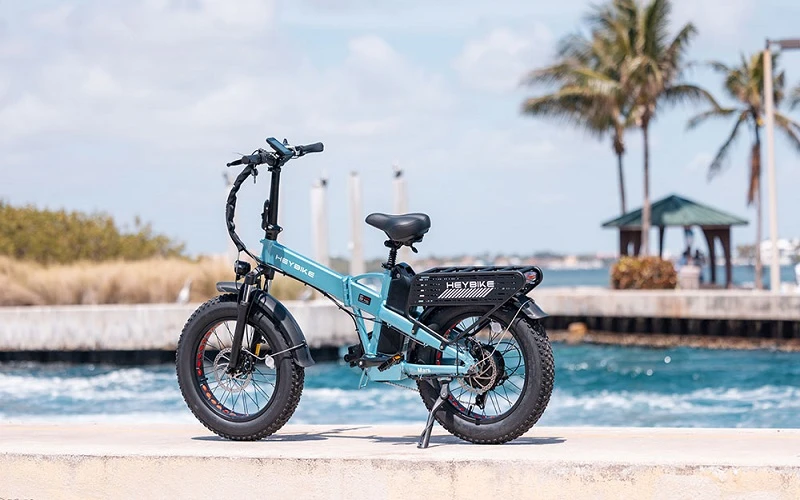Let’s be honest—choosing a new e-bike can feel like a lot. If you’ve been browsing models online, you’ve probably come across more specs than you know what to do with. Motor power, pedal assist, battery size—what does it all mean, and which ones actually matter?
If you’re thinking about buying your first e-bike or upgrading from an older model, this guide is for you. We’re going over the tech upgrades that really make a difference, without the fluff or confusion.
Battery & Range: The Power Behind the Ride
One of the first things to check when buying an e-bike is its battery. A better battery doesn’t just mean more power. It means more miles between charges, more freedom to explore, and fewer interruptions.
You’ll want to look at the battery’s watt-hour (Wh) rating. A higher number usually means a longer range. If you’re someone who rides every day, travels far, or just doesn’t want to think about charging constantly, this is a must-have upgrade.
Some batteries are removable, which makes them easier to charge indoors or swap out with a spare. This is especially useful if you don’t have a plug near where you park your bike.
If range is high on your priority list, you might want to check out some of the best long range e-bikes from Heybike. These bikes often feature high-capacity batteries, efficient motors, and smart systems that stretch your mileage further. They’re great if you commute, ride off-road, or just want to go the distance without worrying about losing power halfway through your trip.
Smart Displays and App Integration
E-bikes have come a long way in the last few years, especially when it comes to displays and controls. Many newer models include full-color screens that show your speed, distance, battery level, and assist level. Some even show ride history or trip stats.
But what really makes these displays smart is app integration. Bikes that connect to your phone through Bluetooth or Wi-Fi give you more ways to control your ride. You can track your routes, adjust your assist settings, run health checks on your battery, and even lock or unlock the bike.
If you like the idea of controlling everything from your phone or getting alerts while you ride, this is one tech upgrade worth looking for.
Motor Technology and Torque Sensors
The motor is what sets an e-bike apart from a regular bike. It gives you the boost you need when you’re climbing hills or riding longer distances. But not all motors are the same.
Hub motors are built into the wheel. They’re simple, reliable, and good for flat roads. Mid-drive motors are placed near the pedals and usually provide better balance and performance on hills or rough terrain. If you ride in different environments or need more control, mid-drive motors are a great choice.
Also, look for torque sensors. These measure how hard you’re pedaling and adjust the motor output to match. That means the harder you push, the more help you get. This creates a smoother, more natural ride.
Improved Pedal Assist and Throttle Options
Pedal assist is one of the features that makes e-bikes so appealing. It gives you a little extra power while you pedal—enough to make hills and long rides easier.
Most newer models come with at least five levels of pedal assist. This means you can adjust the boost based on your energy level, the terrain, or how much effort you want to put in.
Some bikes also come with throttles. These let you ride without pedaling at all, like a scooter. They’re great for starting from a stop or taking a break when your legs get tired.
Look for smoother throttle response and easy-to-use controls. Thumb and twist throttles are common, and both work well depending on your preference.
Suspension and Comfort Features
Comfort isn’t just about the seat. It’s about how the entire bike handles bumps, cracks, and rough patches. This is where suspension comes in.
If you mostly ride on streets or paved trails, a front suspension fork might be enough. But if you like riding off-road or on uneven terrain, full suspension (front and rear) is the way to go.
Other comfort upgrades to look for include wide, padded saddles; adjustable stems; and ergonomic grips. These might seem like small things, but they really do make a difference, especially on longer rides.
Brakes, Lights, and Safety Enhancements
Good brakes are important, no matter where you ride. Most high-quality e-bikes now come with hydraulic disc brakes. These give you better stopping power and more control, especially in wet or downhill conditions.
Lighting is another area where newer e-bikes have stepped it up. Integrated front and rear lights are now common. Some even include brake lights or turn signals for added visibility.
If you ride in traffic or at night, look for bikes with built-in lighting. You’ll feel safer, and you’ll be more visible to others on the road.
Folding Frames and Space-Saving Designs
Not everyone has space for a full-size bike. If you live in a small apartment or want to bring your bike on public transit, folding e-bikes are a solid choice.
The best ones fold quickly and lock in place, making them easy to carry or store. Despite their compact design, many still offer powerful motors and long-range batteries.
Even if you don’t need a folding frame, some non-folding bikes are still built with space in mind. Hidden wiring, low-profile frames, and integrated batteries give these bikes a clean look and save room in your storage space.
Upgrading to a new e-bike can be exciting, but also a little confusing. With so many models out there, it’s easy to get lost in specs and features. The key is to focus on what matters most to you.
Want to ride farther? Look for a high-capacity battery and an efficient motor. Need comfort? Go for better suspension and a padded seat. Want to track your rides? Pick a bike with smart app support.
You don’t need to spend a fortune or chase every new feature. Just choose the upgrades that make your rides easier, smoother, and more enjoyable. That’s what a good e-bike is all about.




